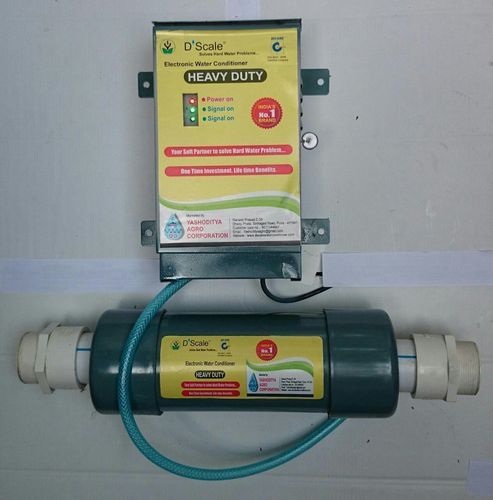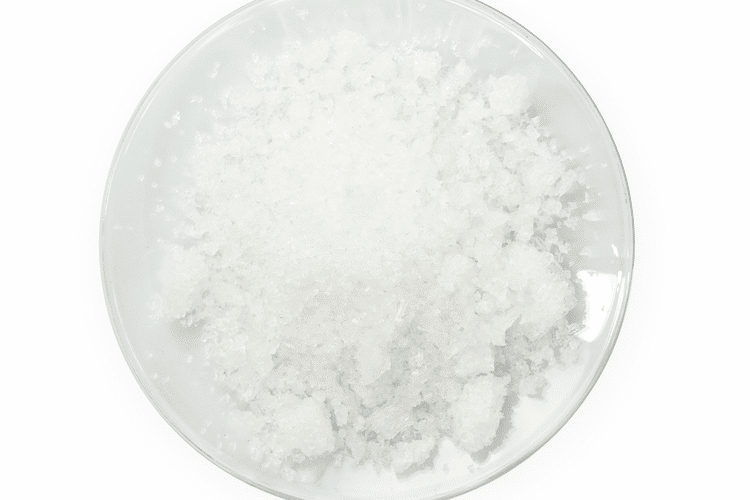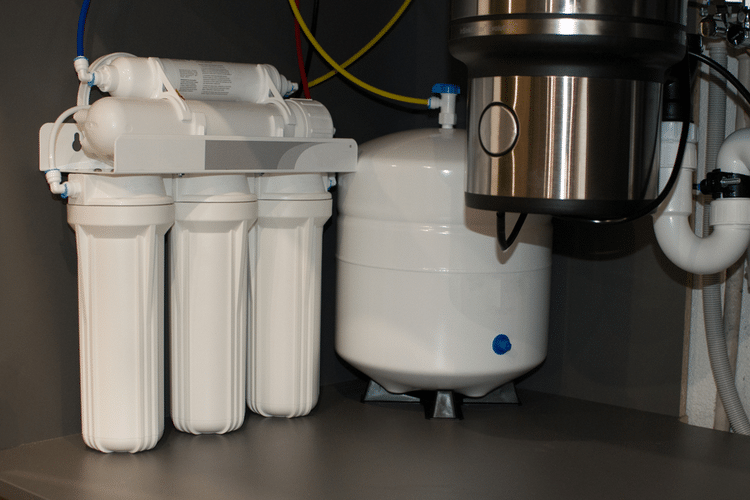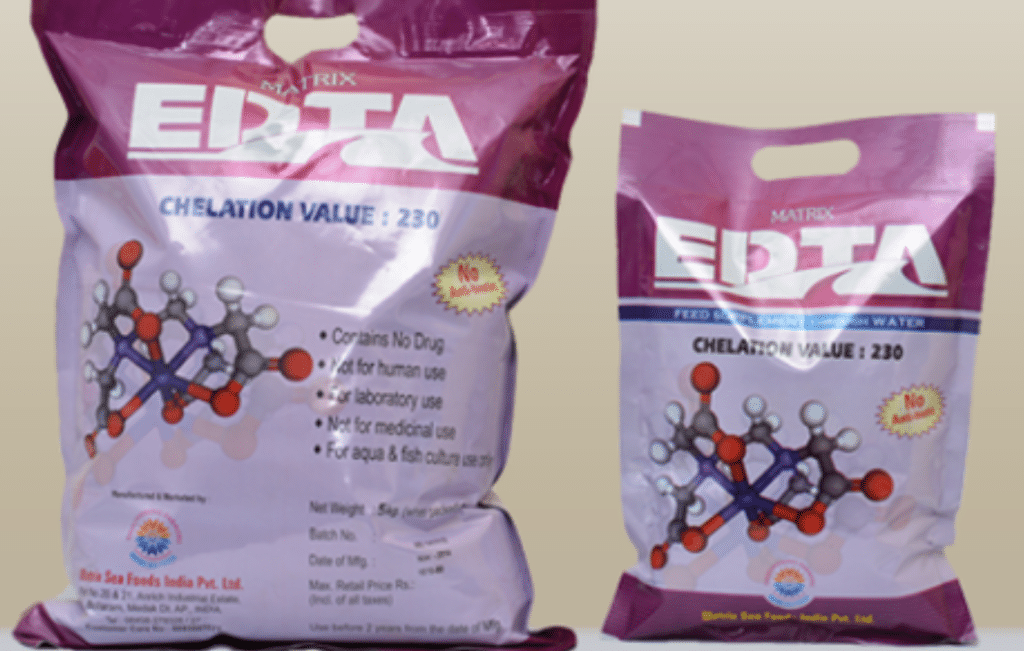Using a traditional salt-based water softener system is one of the most effective ways to eliminate hard water. However, these systems are expensive and require you to add salt to the system on a regular basis, which adds to their long-term costs.
Fortunately, there are water softener alternatives such as magnetic water softeners, template assisted crystallization and chelating agents. These alternatives are nearly or equally as effective as standard water softener units.
Water Softener Alternatives
- Electromagnetic water conditioning
- Template Assisted Crystallization
- Potassium chloride water softener
- Reverse osmosis
- Chelating agents
1. Electromagnetic Water Conditioning
Electromagnetic water conditioners use a magnetic field to eliminate minerals and impurities from water. They’re also called electromagnetic descalers or electronic water softeners.
An electromagnetic water conditioner works by using a metal coil to wrap around the main water line. The electricity in the control box then uses that coil to generate a magnetic field that alters the chemical structure of calcium and magnesium ions, preventing them from sticking to the water pipes and forming limescale on appliances, dishes, and clothes.

The main benefits of this system are that it’s quiet, easy to install, easy to maintain, and doesn’t require any added chemicals. There are no filters to change or salt to refill.
However, one downside to note is that there aren’t many studies to show that magnetic descaling is as effective as other methods. Especially when compared to salt-based devices that have an almost 100% success rate in mineral removal, the scale reduction capacity of descalers is quite humble at 50%.
Still, customer experience and user feedback show that our favorite descaling device, the Yarna Capacitive, reduces limescale and improves the lifespan of appliances to a great extent.
2. Template Assisted Crystallization
Template-assisted crystallization (TAC) water conditioning uses a catalyst to turn hard water minerals into microscopic crystals that can’t bond to water pipes and other surfaces. This method is commonly used in salt-free water softener systems.
Similar to magnetic descaling, TAC-based systems don’t remove minerals. They only alter their molecular structure so they can’t stick together or to surfaces.
Since TAC isn’t a removal method, the systems that employ it aren’t as efficient as the salt-based systems either, but their scale reduction rate is much better than that of magnetic conditioners: 90%.
On top of their impressive scale reduction rate, TAC-based systems are compact, because they don’t have any brine tanks, and more affordable than salt-based water softening alternatives, because they’re less complicated. As they don’t require regeneration, you won’t have to pay for salt either.
3. Potassium Chloride (An Alternative to Water Softener Salt)
Potassium chloride is just as effective at softening water as regular sodium chloride water softener salt. However, you’ll need to use significantly more of it to get the same benefits. This makes it an expensive alternative to the salt-based softening process.
A benefit to potassium chloride is that it’s more eco-friendly than sodium. As we established before, conventional water softening devices replace minerals with sodium chloride, and sodium can be harmful to soil and plants. In contrast, plants can use potassium chloride as a type of fertilizer.

Potassium chloride is also champion over sodium because excessive sodium intake can lead to cardiovascular issues. However, note that high blood potassium levels may also lead to similar cardiovascular problems, so there’s not really much difference between the two on that front.
That said, unless you’re on a low sodium or potassium diet due to already-existing conditions like hypertension or kidney disease, the sodium or potassium intake you get by drinking softened water is unlikely to create any health problems for you.
4. Reverse Osmosis
Reverse osmosis (RO) is a water purification process that removes most contaminants found in water. In addition to removing contaminants, it also eliminates minerals like calcium and magnesium that cause water hardness.
In RO, the system pushes water through a semipermeable membrane that has microscopic pores. Most RO systems have a 0.0001-micron pore size which doesn’t allow any mineral molecules to pass through.

Thanks to its microscopic filtration, an RO system is also capable of removing hazardous impurities like lead, arsenic, and chromium with great efficiency. So, the water it provides for your family won’t only be soft but also free of contaminants.
With traditional salt-based water softening units, you need to add new salt to the brine tank on a monthly basis. This isn’t a concern with RO units. That said, most RO systems require you to replace their semi-permeable membrane once or twice a year, and considering that these devices are as expensive as water softeners, they’re hardly the most economical softener alternative.
Lastly, although these systems don’t release sodium into the environment, they waste a certain amount of water to create pure water. In that sense, they’re not exactly the most eco-friendly water softener alternative.
5. Chelating Agents
Chelating is a method commonly used in industrial-level water treatment plants to bind positively charged ions, including hard water molecules like calcium and magnesium. In this method, a chelant, which is a specifically modified molecule, is used to prevent molecules from forming deposits and buildup.
That said, water-softening devices rarely utilize this technique. In household use, chelating agents typically appear in cleansing products like laundry detergents, hard surface cleaners, soaps, and shampoos.

Detergents that feature chelating agents don’t allow minerals to stain laundry and make it possible for hard surface cleaners to easily remove mineral buildup from surfaces. Soaps and shampoos, on the other hand, eliminate the adverse effects of hard water, like dullness and dryness, on our skin and hair.
Apart from these two uses, there’s no proper household use for chelation, especially not in the context of softening drinking water, as the process requires lots of chemicals that might be hazardous. So, chelating agents are only an alternative to a traditional water softener when it comes to cleaning and bathing.
Is There an Alternative to Salt for Water Softener?
Yes. Using potassium chloride is one of the most common ways to replace salt in traditional salt-based water softeners.
Conclusion
Traditional water-softening devices can be costly and are hardly eco-friendly, since they release too much sodium to the environment. Luckily, there are a couple of alternatives that are worth considering if you want to soften hard water in an environmentally-friendly way.